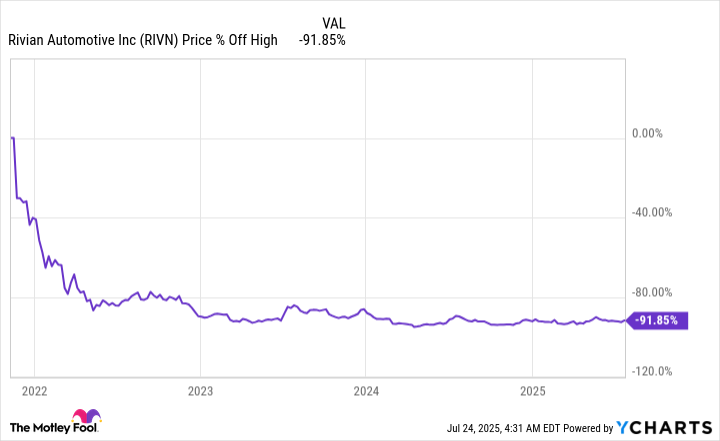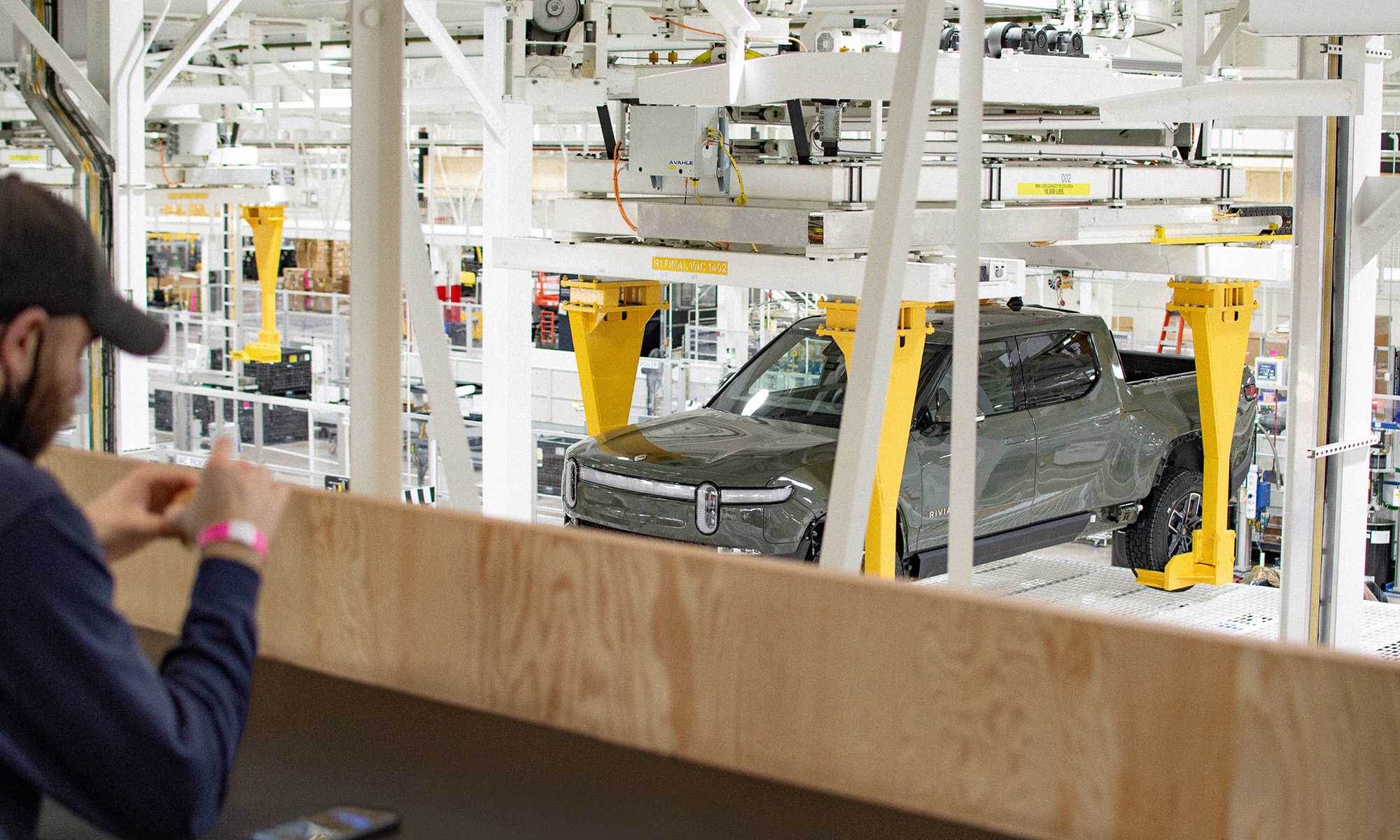Rivian (RIVN 5.22%) has a problem at the bottom of its income statement. And that problem, red ink, is likely to continue to be an issue for a while longer. But there are signs of material progress at this electric vehicle (EV) maker that investors should watch closely. In fact, the company's progress toward black ink could speed up very soon.
What does Rivian do?
Rivian makes EV pickups, vans, and SUVs for both the commercial and consumer markets. It is, basically, an upstart electric vehicle company, trying to copy some of the success that Tesla (TSLA 1.05%) has achieved. The key difference is that the company is focused more on larger vehicles like SUVs, which are particularly popular in the U.S. market.

Image source: Getty Images.
Breaking into the automotive business is no small task, given that the industry is filled with long-entrenched giants. Virtually all of the major auto companies are building EVs now. And then there's the huge upfront costs associated with an industry that is highly capital-intensive and highly regulated. Tesla proved it can be done, but it did that when there was basically no competition in the EV space.
Rivian has achieved a lot
That said, Rivian has made a huge amount of progress as a company, hitting key milestone after key milestone. It hasn't been a smooth path. Few businesses manage to fly higher in a straight line. But, overall, Rivian has been doing very well.

NASDAQ: RIVN
Key Data Points
At this point, the company has a successful commercial product and a successful consumer product. On the commercial side, a partnership with Amazon helped to fund Rivian's early development efforts. And now the EV maker is looking to expand its commercial business, selling delivery trucks to more customers. The big news, however, is on the consumer side.
After ramping up its production capacity, Rivian retooled its factory and upgraded its SUVs. The key outcome was that it was able to reduce costs to the point where it turned a modest gross profit in the fourth quarter of 2024. That was the target, with the feat repeated in the first quarter of 2025. This only means that Rivian made more money selling EVs than it cost to build those EVs. It is still losing money because of the other costs associated with the business, including R&D and SG&A -- which is where the next big step comes in.
To date, Rivian has focused on higher-end pickups and SUVs. It is getting set to introduce the R2, a lower-cost, smaller SUV that is expected to have mass-market appeal. Assuming the R2 does, indeed, gain traction, Rivian will be producing more vehicles. And that will allow it to spread its costs over a higher volume of vehicles. The hope is that this will allow the automaker to become sustainably profitable. Notably, this is roughly the same plan that Tesla used to go from being an upstart to an industry leader.
Data by YCharts.
Rivian is getting close to the next milemarker
So Rivian looks like it may be about to see an inflection point in its business, with the plan for R2 production to start in early 2026. But it has a secret weapon, if you will, as it looks to reach the next big milestone. It has a partnership with Volkswagen in which the giant automaker provides Rivian cash, with the hope that Volkswagen will eventually use Rivian technology in its own cars. Rivian just unlocked an additional $1 billion investment from Volkswagen, funding that will help Rivian get the R2 up and running.
And yet Wall Street seems content to watch from the sidelines. To be fair, Rivian is a money-losing start-up taking on industry giants, so taking a "show me" attitude is probably the right approach for most investors. But if you are willing to take on a bit more risk, the stock has been mired at a low level for quite some time. It is currently trading below $15 a share, down more than 90% from its all-time highs despite the success it has been achieving. Getting in now, before the crowd, will allow you to see the full benefit if the R2 launch is as successful as hoped. The likelihood of that outcome appears to be increasing as every quarter passes.







